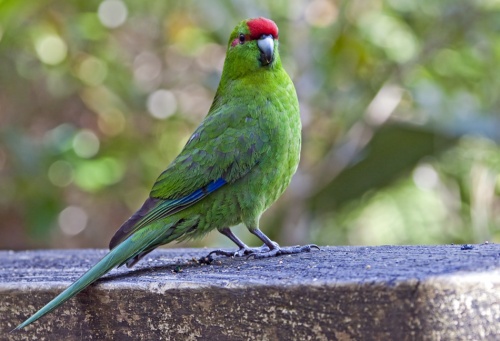m (photo caption) |
|||
| Line 1: | Line 1: | ||
{{incomplete}} | {{incomplete}} | ||
| − | [[Image:Red-crowned_Parakeet_(Kakariki)Tectorony.jpg|thumb|500px|right|Photo by {{user|Tectorony|Tectorony}} <br /> | + | [[Image:Red-crowned_Parakeet_(Kakariki)Tectorony.jpg|thumb|500px|right|Photo by {{user|Tectorony|Tectorony}} <br />[[Tiritiri Matangi Island]], [[New Zealand]].]] |
;[[: Category:Cyanoramphus|Cyanoramphus]] novaezelandiae | ;[[: Category:Cyanoramphus|Cyanoramphus]] novaezelandiae | ||
==Identification== | ==Identification== | ||
Revision as of 03:06, 6 October 2013
| This article is incomplete. This article is missing one or more sections. You can help the BirdForum Opus by expanding it. |
- Cyanoramphus novaezelandiae
Identification
Green body with prominent red crown and spot behind the eye. Leading edges of primaries are blue. Gray bill.
Distribution
Endemic to New Zealand, they are now rarely seen on the mainland in the wild, although they are commonly bred in captivity (with a license). Maori hunted them for food and feathers.
Taxonomy
One of the three species commonly known by the Maori name of Kākāriki. The other two are the Yellow-crowned Parakeet and the critically endangered Orange-fronted Parakeet. Locally known and listed in field guides as the Red-crowned Parakeet. Red-fronted is preferred by international authorities because of possible confusion with the South American Pyrrhura roseifrons.
Reischek's Parakeet was formerly considered to be a subspecies of this species.
Habitat
They are found in mature native forest only, staying high in the canopy and nesting in old holes in the trees.




